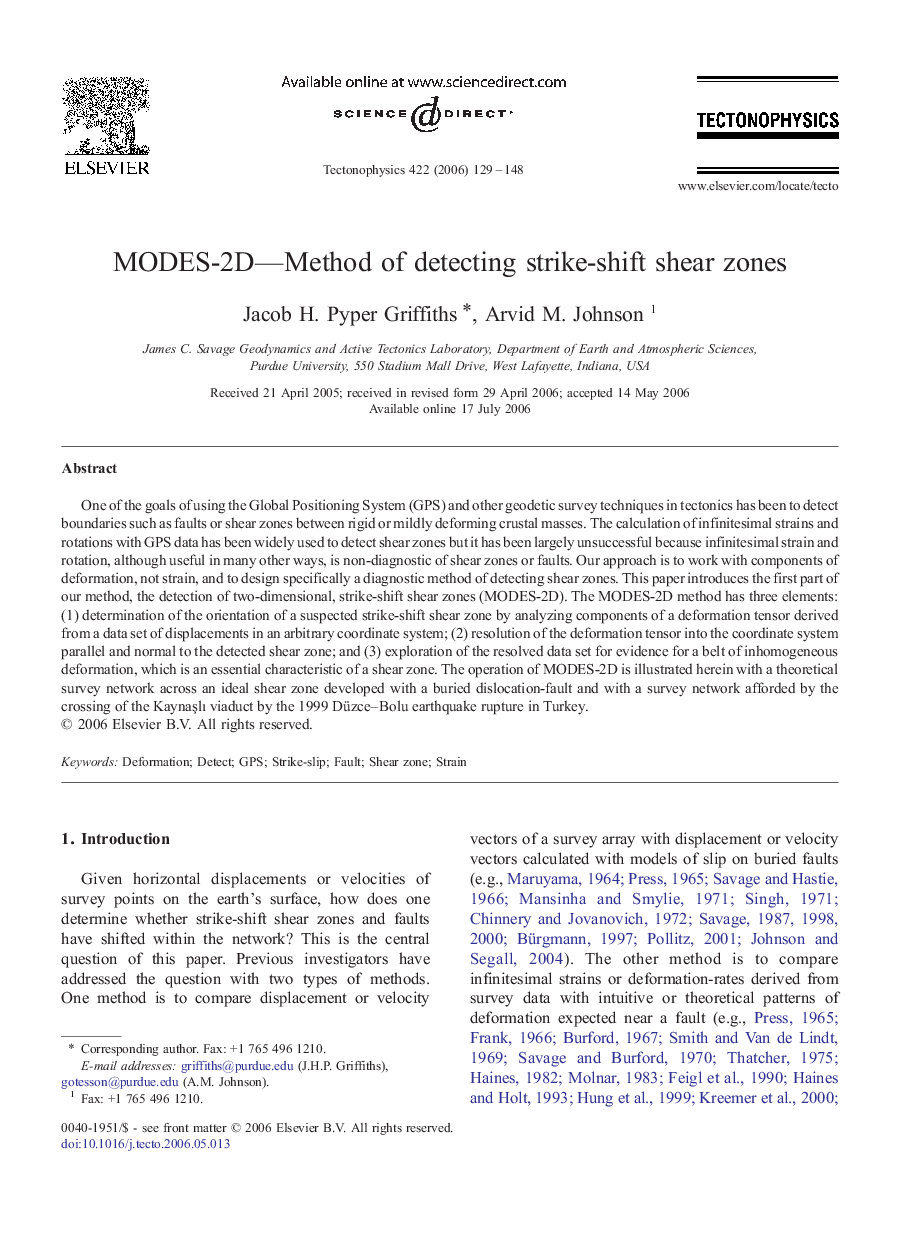| کد مقاله | کد نشریه | سال انتشار | مقاله انگلیسی | نسخه تمام متن |
|---|---|---|---|---|
| 4694859 | 1636950 | 2006 | 20 صفحه PDF | دانلود رایگان |

One of the goals of using the Global Positioning System (GPS) and other geodetic survey techniques in tectonics has been to detect boundaries such as faults or shear zones between rigid or mildly deforming crustal masses. The calculation of infinitesimal strains and rotations with GPS data has been widely used to detect shear zones but it has been largely unsuccessful because infinitesimal strain and rotation, although useful in many other ways, is non-diagnostic of shear zones or faults. Our approach is to work with components of deformation, not strain, and to design specifically a diagnostic method of detecting shear zones. This paper introduces the first part of our method, the detection of two-dimensional, strike-shift shear zones (MODES-2D). The MODES-2D method has three elements: (1) determination of the orientation of a suspected strike-shift shear zone by analyzing components of a deformation tensor derived from a data set of displacements in an arbitrary coordinate system; (2) resolution of the deformation tensor into the coordinate system parallel and normal to the detected shear zone; and (3) exploration of the resolved data set for evidence for a belt of inhomogeneous deformation, which is an essential characteristic of a shear zone. The operation of MODES-2D is illustrated herein with a theoretical survey network across an ideal shear zone developed with a buried dislocation-fault and with a survey network afforded by the crossing of the Kaynaşlı viaduct by the 1999 Düzce–Bolu earthquake rupture in Turkey.
Journal: Tectonophysics - Volume 422, Issues 1–4, 20 August 2006, Pages 129–148